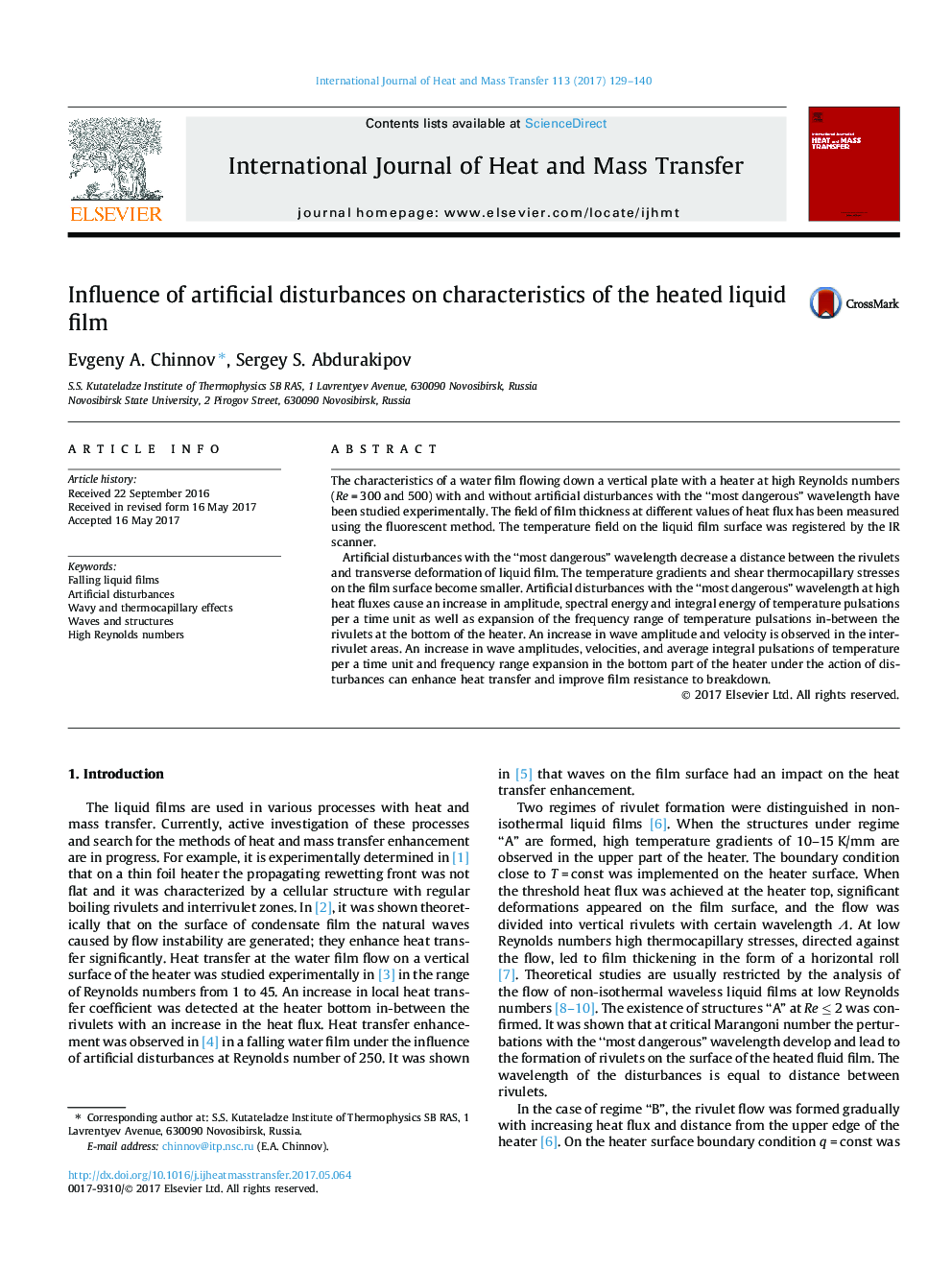| Article ID | Journal | Published Year | Pages | File Type |
|---|---|---|---|---|
| 4994161 | International Journal of Heat and Mass Transfer | 2017 | 12 Pages |
Abstract
Artificial disturbances with the “most dangerous” wavelength decrease a distance between the rivulets and transverse deformation of liquid film. The temperature gradients and shear thermocapillary stresses on the film surface become smaller. Artificial disturbances with the “most dangerous” wavelength at high heat fluxes cause an increase in amplitude, spectral energy and integral energy of temperature pulsations per a time unit as well as expansion of the frequency range of temperature pulsations in-between the rivulets at the bottom of the heater. An increase in wave amplitude and velocity is observed in the interrivulet areas. An increase in wave amplitudes, velocities, and average integral pulsations of temperature per a time unit and frequency range expansion in the bottom part of the heater under the action of disturbances can enhance heat transfer and improve film resistance to breakdown.
Related Topics
Physical Sciences and Engineering
Chemical Engineering
Fluid Flow and Transfer Processes
Authors
Evgeny A. Chinnov, Sergey S. Abdurakipov,
